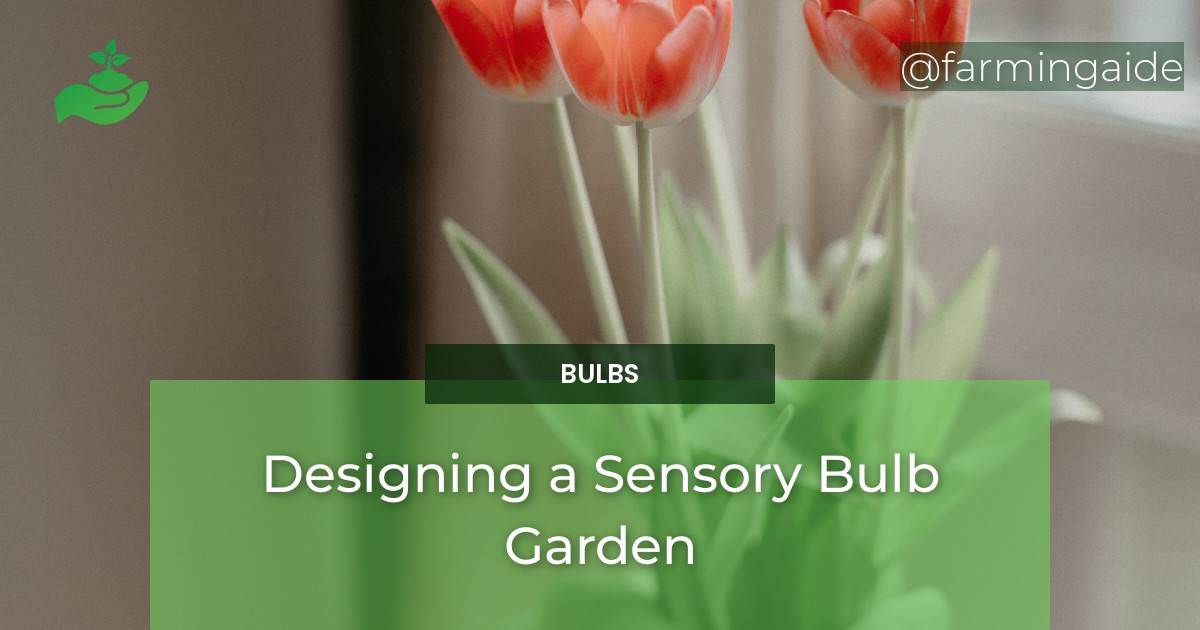A sensory bulb garden is a delightful addition to any outdoor space. This type of garden stimulates all the senses, making it a relaxing and enjoyable space to spend time in. Additionally, bulb flowers can add stunning colors and textures to your sensory garden. In this article, we’ll guide you through designing your own sensory bulb garden, from planning to caring for it. By the end of this comprehensive guide, you’ll have all the knowledge you need to create a beautiful and sensory-filled outdoor space.
Introduction to Sensory Gardens
A sensory garden is a garden that engages the five senses: sight, smell, touch, taste, and sound. These gardens are designed to be a therapeutic and calming space that provides sensory stimulation. Sensory gardens can be enjoyed by people of all ages and abilities, making them a popular addition to schools, hospitals, and retirement homes. In a sensory garden, visitors can experience the beauty and therapeutic benefits of nature.
Planning your Sensory Bulb Garden
Choosing the Right Bulb Flowers
The first step in designing a sensory bulb garden is choosing the right bulbs. When selecting bulbs, consider their color, texture, and fragrance. Some popular bulb flowers for sensory gardens include daffodils, hyacinths, tulips, and crocuses. Be sure to choose bulbs that will bloom at different times of the year, so your garden is always in bloom.
Considering the Garden Location and Layout
The location of your sensory bulb garden is important. When choosing a location, consider how much sunlight and shade the area gets, as well as the soil quality and drainage. You may also want to consider the layout of your garden, including the placement of paths and seating areas. A well-planned garden layout can enhance the sensory experience for visitors.
Selecting Complementary Plants and Features
In addition to bulb flowers, you may want to include other plants and features in your sensory garden. For example, herbs like lavender and mint can add fragrance to your garden, while ornamental grasses can add texture. You may also want to include water features, wind chimes, or other elements that engage the senses.
ALSO READ
Engaging the Senses with Bulb Flowers
Sight – Using Color and Texture
Bulb flowers are known for their stunning colors and textures. Use these to your advantage by planting bulbs in groups of different colors and textures. For example, a group of yellow daffodils next to a group of purple hyacinths can create a beautiful and eye-catching display. Additionally, you can use bulbs with different heights and shapes to add visual interest to your garden.
Smell – Incorporating Fragrant Bulb Flowers
One of the best things about bulbs is their fragrance. Incorporate fragrant bulbs like hyacinths and lilies into your sensory bulb garden to engage visitors’ sense of smell. Plant bulbs in groups to amplify their fragrance.
Touch – Creating Tactile Surfaces
Texture is an important element in a sensory garden. Use bulbs with different textures, such as alliums and fritillarias, to create a tactile experience. You can also add other elements to your garden to enhance the tactile experience, such as soft grasses or water features.
Taste – Edible Bulb Flowers
Some bulb flowers, like tulips and daffodils, are toxic if ingested. However, there are several edible bulb flowers that you can include in your sensory garden. Edible bulb flowers include tulips, daffodils, and crocuses. Be sure to research which parts of the flower are edible before consuming them.
Sound – Adding Rustling Leaves or Moving Water
Incorporating sound into your sensory bulb garden can enhance the overall experience. You can add sound elements like rustling leaves or moving water to your garden. For example, a small fountain or waterfall can add the soothing sound of running water to your garden.
Caring for Your Sensory Bulb Garden
Soil Preparation and Planting Tips
Before planting your bulbs, it’s important to prepare the soil. Bulbs prefer well-draining soil, so consider adding sand or compost to improve drainage. When planting bulbs, be sure to follow the recommended planting depth for each type of bulb. Additionally, bulbs should be planted in the fall for spring bloom, or in the spring for summer bloom.
Watering and Fertilizing
Bulbs require regular watering and fertilizing to thrive. Water your bulbs deeply once a week, and be sure to fertilize them once a month during the growing season. Be careful not to overwater your bulbs, as this can cause them to rot.
Dealing with Pests and Diseases
Bulbs can be susceptible to pests and diseases like aphids and bulb rot. To prevent these problems, be sure to plant your bulbs in well-draining soil and avoid overwatering them. Additionally, you can use organic pest control methods like neem oil to keep pests at bay.
Conclusion
A sensory bulb garden is a wonderful addition to any outdoor space. By using bulbs with different colors, textures, and fragrances, you can create a garden that engages all the senses. Additionally, adding complementary plants and features can enhance the sensory experience. With proper care and maintenance, your sensory bulb garden will be a beautiful and enjoyable space for years to come.


